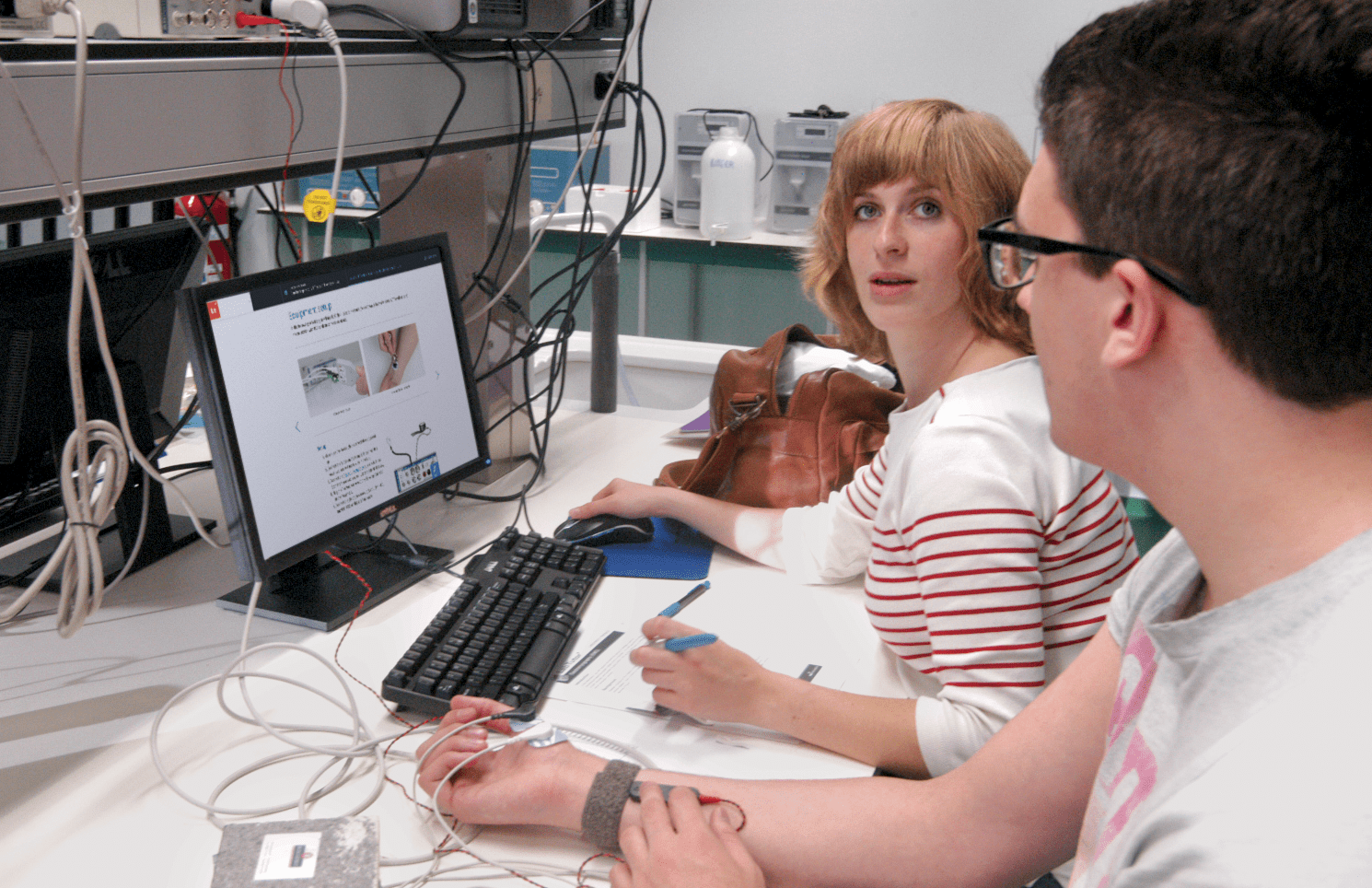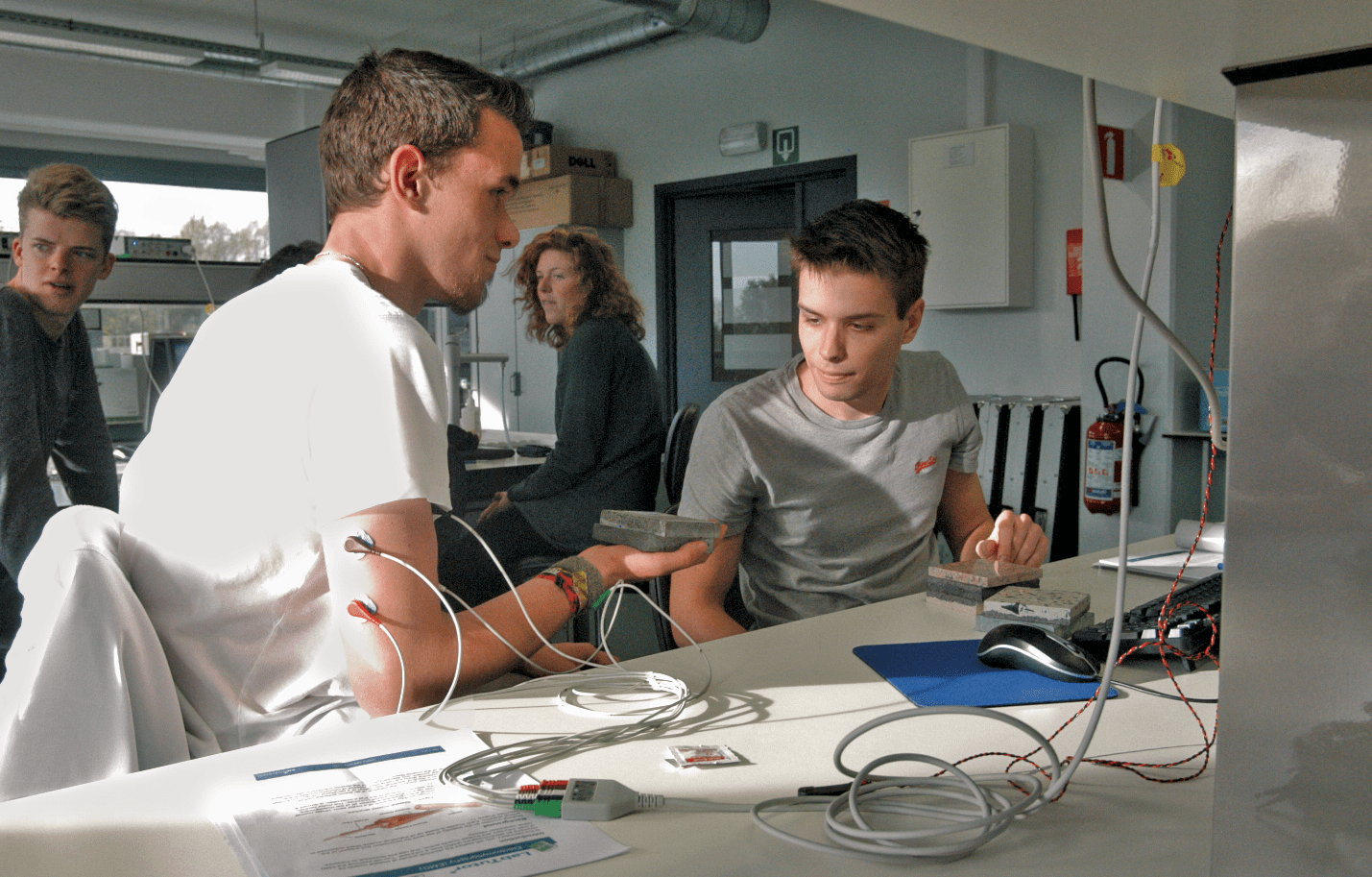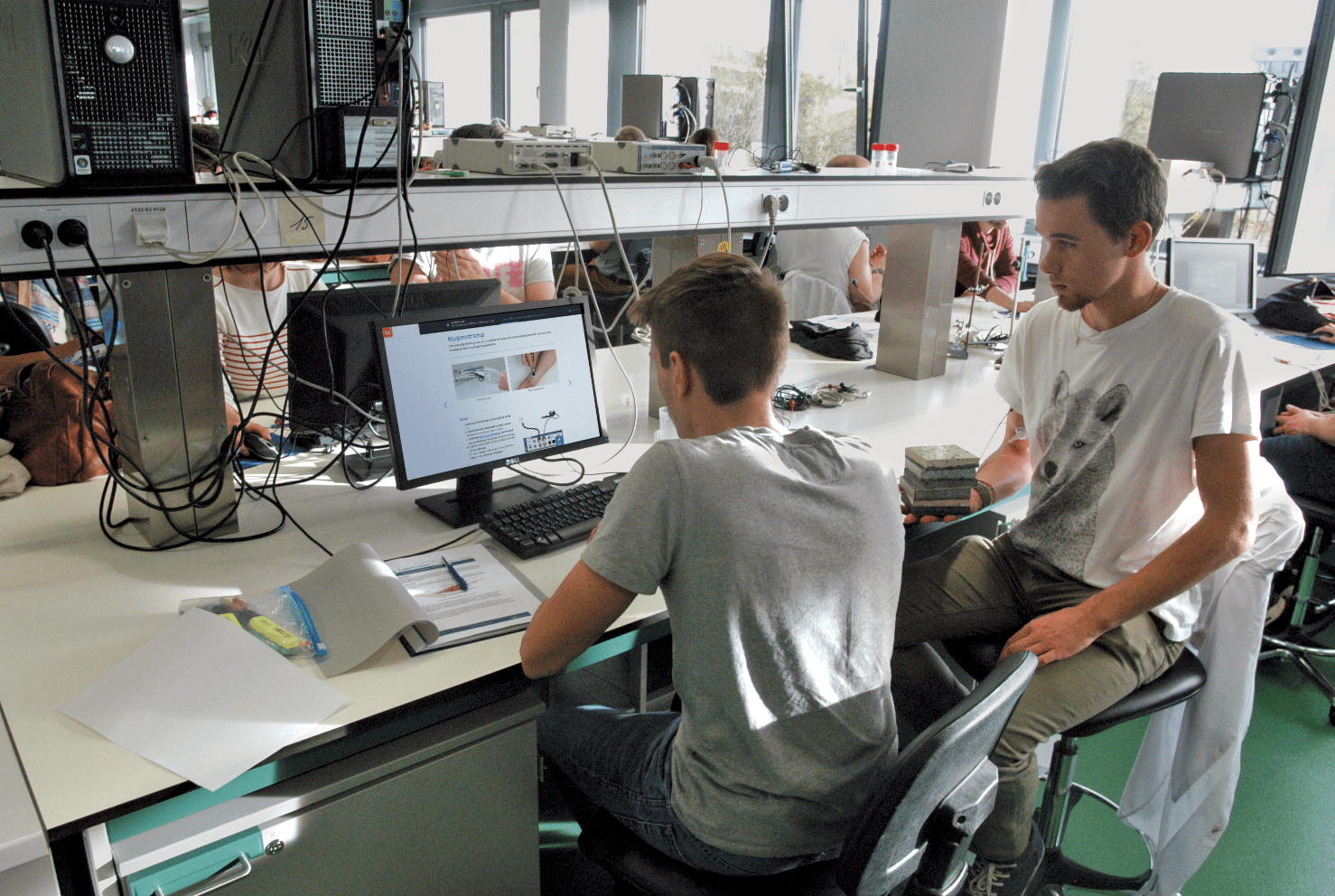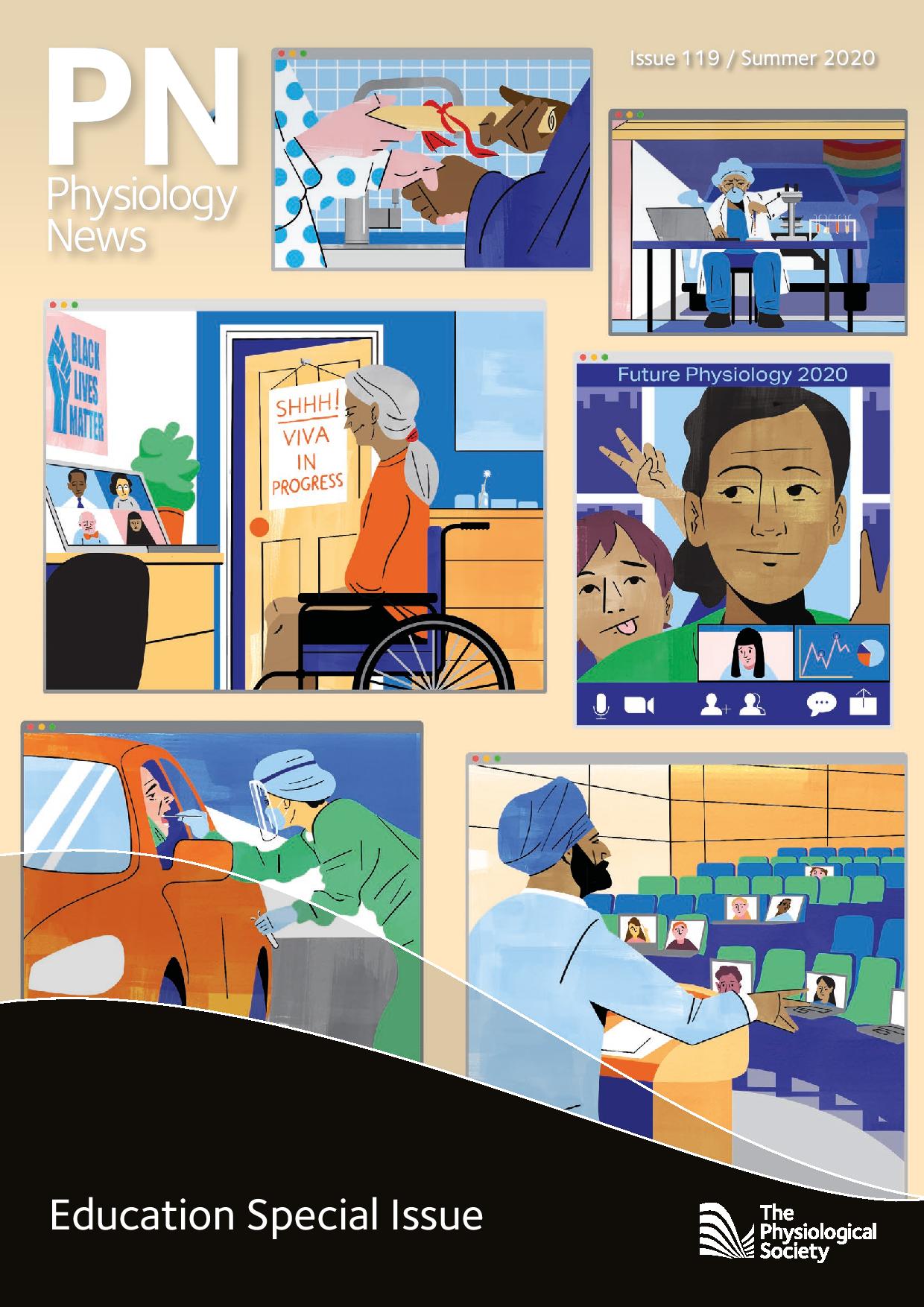
Physiology News Magazine
New virtual adventure in physiology practicals
Features
New virtual adventure in physiology practicals
Features
Marc Demolder, University of Antwerp, Belgium
https://doi.org/10.36866/pn.119.25
Please tell us a little about your field of teaching.
I teach physiology practical exercises in Pharmaceutical Sciences, Biomedical Sciences, Veterinary Sciences, Biology and Rehabilitation Sciences and Physiotherapy. The practicals I run range from neurophysiology to exercise physiology and echo-cardiography.
What was your biggest concern or challenge with having to switch to online practicals?
The most significant concern associated with the COVID19 crisis was the total stop on any practical laboratory sessions at the University of Antwerp. As a result of the lockdown, students were not allowed access to the university campus. Lab sessions needed to be presented in a virtual environment, in order to be executed. Needless to say, lab sessions with no appropriate software environment were condemned to a PDF document with the description of the lab session and some Excel data for further analysis and reporting by the students at home.

Another challenge of switching to a purely online lab was the management of the logins for the students and the follow-up on their progress. And, of course, the lack of personal contact with the students during the lab sessions was my biggest concern because one loses the possibility to ask questions and get direct feedback from the current knowledge of students.
How did the online-teaching platform Lt from ADInstruments help you overcome this challenge?
We could effectively move our labs to an online model by initialising the example data feature in Lt. This feature provides model data for experiments, already stored in the Lt learning platform. The main reason why we were able to adapt our teaching online so quickly is that Lt already provides a full online environment. Even a department, which still used a retired education platform – LabTutor – could comfortably switch to Lt due to easily accessible introduction lessons.
Students are normally in the lab to capture data and to interact with their teachers. The lack of personal contact between teachers and students was overcome by theoretical lessons with feedback and the pre-lab tests, which are part of a module in Lt.
Were there any specific modules that were particularly difficult (or easy) to move online?
In general, all modules could be moved online. Some modules did not require any change, as no external data had to be generated, such as sensory physiology with labs on colour-blindness. Other lab sessions needed a data input from transducers, but were not connected to the data acquisition system. We solved this problem by giving the students an
Excel sheet with the necessary data, allowing them to introduce the data in the different data panels in the Lt virtual lab. Finally, some of the Lt virtual labs offer the possibility to activate implemented example data. We used all three approaches in our online setting. Depending on the different courses, we had to adapt some ready-made labs in Lt. This was the case for veterinary sciences and pharmacology.

Did you make use of the example data provided by ADI for the COVID-19 response?
Example data is a feature we normally use as a preview of how a trace, e.g. an ECG, would look like prior to the lab. In addition, example data is a great solution to perform analysis, when live data generated in the lab was not as expected. This is often the case for hard to get data, e.g. with Visual Evoked Potential. Using this example data as a solution for effective data analysis in an online virtual mode was a welcome and easy-to-implement solution.
How easy was it to set up your online practicals on Lt, with reference to the authoring process and user-friendliness?
We used the same lab content as we would have done in a non-virtual manner. We adapted some labs like Heart and ECG, Heart Sounds and EOG (Electro Oculography), but this was an easy task. Students sometimes deleted their invitations to the platform by accident, but this could be easily managed by the course administrator. The follow up of the student work was efficient.
What has the student feedback been like since you started running virtual labs with Lt?
Apart from some startup problems for a few students, everything went smoothly. The online theoretical lessons with instant feedback were highly appreciated and together with the pre-lab tests, formed a smooth transition from live to online labs. Being able to perform these labs at their own pace was a welcome advantage. It increased their level of understanding. This is certainly a way of teaching we would like to keep for next academic year, some students stated.
Overall, the feedback was positive and the students performed more lab sessions than the students of previous academic years. We also added additional labs, which were optional for students to do e.g. EEG lab. Students were not obligated to execute these additional labs, but many did out of interest.

What has the staff feedback been like since you started running virtual labs with Lt; how strongly would you recommend using Lt to a colleague?
The Lt platform is very interesting, from the point of view of a professor in physiology. The theoretical lessons in the modules are indeed a welcome addition to the lectures; they present the theory of the lectures in a different manner (instant feedback on student work, real-life patient case studies). Lt encourages thinking and improves insight, as well as providing the essential information that enables students to perform the lab-sessions. The lessons can be easily adapted, so for the next academic year, this way of teaching surely opens new perspectives.
Due to the COVID19 crisis, group work is not possible anymore. However, each student now has to think about the questions in the lab for themselves, which some students don’t do in a group! The amount of reports to grade has doubled, which is a big workload for teachers! The fact that students cannot take measurements anymore from their own bodies is, of course, regrettable.
We started using Lt at first for the students of Pharmacology. Subsequently, we recommended its success to our colleagues, who run Rehabilitation and Biomedical Sciences courses and finally to the Veterinary Sciences department. The result was that we had more structure in the lab sessions, as well as more content due to the theoretical lessons that are included in Lt to begin with. Ultimately, Lt led to better prepared students, with better reports.
What things have you learned from this online teaching experience that you will bring back in the classroom, once things get back to normal?
The interaction between the teacher and the student remains an important aspect of lab-based teaching. The level of some answers from a few students in pharmacology has dropped compared to the last academic year. The reason for the difference could well be the fact that we were not able to interact with the students due to the lockdown measures. Another reason could be the sudden and complete change in teaching style, which can take a little bit of time for some students to adjust to. However, this problem did not occur with the students of Veterinary Sciences.
To solve this, instruction videos could be used, also available at the ADInstruments website. Another idea is to have the first session in the lab at the university and subsequent lab sessions could be performed online. In this way, we would be sure that students get the full functionality of the system and would be aware of the level at which they need to perform. The clear pedagogical approach of the theoretical lessons in physiology of Lt inspired some teachers to take this back into the classroom.
How would you summarise your overall online teaching experience?
Online lab sessions in physiology started already several years ago with LabTutor (precursor of Lt). The platform allowed students to preview the actual lab session exercises with example data in a virtual manner, on their computers at home. It also allowed them to finalise the reporting in an online setting. This was a very positive first experience with extremely positive feedback from the students. Currently, we are using the Lt platform, which has a lot more features than LabTutor, such as real-life patient cases, instant feedback for students, support for devices such as tablets and a larger variety of module collections.
The use of online teaching modules in Lt has greatly extended our online way of working and solved instant problems arising from the COVID19 crisis in a matter of hours. The instant feedback capabilities on student work in Lt, pre-lab tests and the example data sets in the lab exercise itself have fully enabled us to work in an online manner, at a time when students could not collect live data and interact with the teacher directly. We had to act very fast, but were able to continue.
What would be your three key tips or pieces of advice for educators that might be struggling with the move to online or looking for new solutions? And, why do you prioritise those three?
Having a high performance software environment is the first key to a successful online lab. Secondly, it should be easy to implement modern aspects of teaching, like blended learning, into the software. Modern data acquisition and transducers will complete the state-of-the-art aspect of an online lab.
- Moving lab sessions online demands a solid software environment with an integrated software management of logins, and follow up of the student work.
- Easy implementing or changing of the lab session content in a user friendly software environment, which allows state-of-the-art tools to be added in the content, like videos, links and grading tools.
- The use of modern transducers and data acquisition to give the students the possibility to measure using their own bodies. Current transducers with implemented Bluetooth or other communication protocols can open up new possibilities.
In conclusion, it was the versatile software environment of Lt, combined with the use of example data, that made the switch to virtual labs an easy and successful operation in this COVID19 lockdown.
Marc Demolder (MSc Eng) manages the practical exercises for biological science classes at the University of Antwerp in Belgium. Students get hands-on experience and gain deeper scientific knowledge, with exercises ranging from recording nerve action potentials to analysing echo-cardiographs to exercise physiology experiments.
